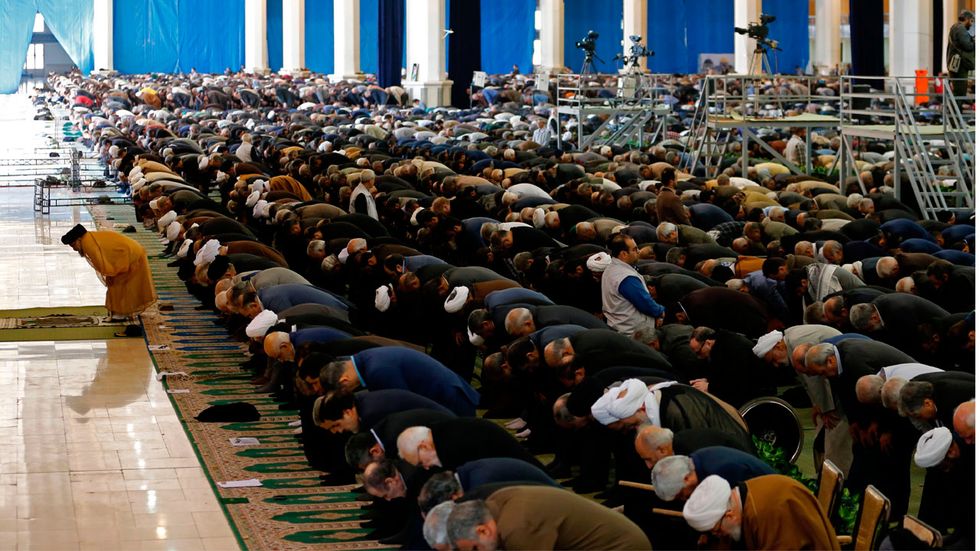
Muslims are expected to become the second-largest religion in the U.S. by 2040, according to the Pew Research Center. (Atta Kenare/Getty Images)

An analysis by the Pew Research Center predicts Muslims will become the second-largest religious group in America by 2040.
If estimates by the Pew Research Center hold true, Muslims will not outnumber Christians in the U.S. anytime soon. Christianity is currently the largest religion in the nation, representing about 71 percent of the population.
But the Muslim population is rapidly growing and is on track to take over second place, a spot currently held by the Jewish faith. People who identify as Jewish comprise about 1.9 percent of the population.
But that is expected to change over the next two decades.
According to the study, Muslims will become the nation's second-largest religious group by 2040. By 2050, the U.S. Muslim population is projected to reach "8.1 million, or 2.1% of the nation’s total population — nearly twice the share of today," the study said.
Immigration and high fertility rates are key factors in the growth of the Muslim population. According to Pew’s study, “a record number” of Muslims immigrated to the U.S. in 2016. Roughly 75 percent of Muslims in the U.S. are immigrants or children of immigrants. Muslims are also generally younger than people in other religious groups. That means they have a higher fertility rate.
Over the past decade, the Muslim population has shown steady growth.
“In 2007, we estimated that there were 2.35 million Muslims of all ages (including 1.5 million adults) in the U.S.,” the study states. “By 2011, the number of Muslims had grown to 2.75 million (including 1.8 million adults)."
Since then, the Muslim population has grown by about 100,000 per year, according to the study.
The growth of the Muslim faith is based on estimates. There is no “official” count of American Muslims because the U.S. Census Bureau does not track religion, the Pew Research Center notes. The analysis combines data collected by Pew in 2007, 2011 and 2017, along with other information from the U.S. Census.
Even though the Muslim population in America is likely to double over the next few decades, it will still represent a small portion of the overall U.S. population, according to the study. Christians in the U.S. will number about 253 million people by 2020, a figure equal to about 70 times the estimated Muslim population.
No single country accounts for more than 15 percent of adult Muslim immigrants to the United States. According to Pew figures, 15 percent are from Pakistan, followed by Iran (11 percent) and India (7 percent). Rounding out the list are Afghanistan (6 percent), Bangladesh (6 percent), Iraq (5 percent), and Kuwait, Syria, and Egypt (3 percent each).
Around the world, however, that is a different story. Globally, Muslims will nearly equal the number of Christians by 2050, the study said.
The Pew's Religious Landscape Study shows that 22.8 percent of Americans claim no religious affiliation. By 2020, about 63 million Americans will not identify with a religion, according to the study. And by 2050, that figure is projected to grow to more than 100 million.